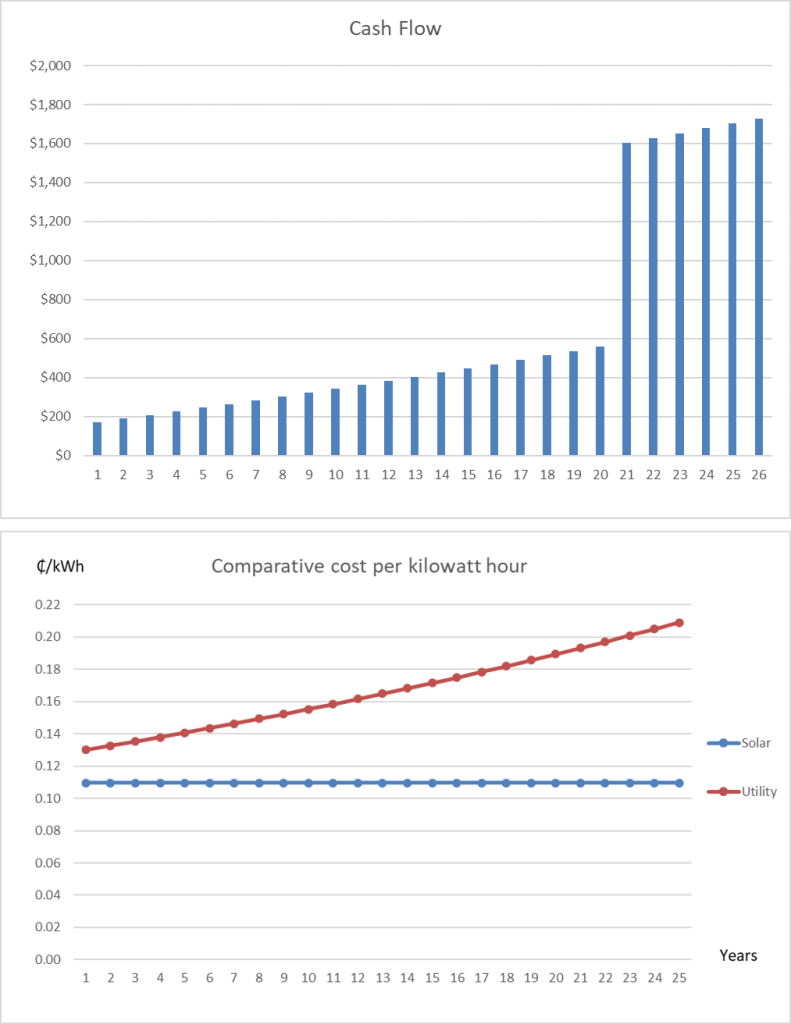PV system owners only need a utility interconnection agreement if they sell power across the meter into the utility grid.
When a PV system has energy storage, it is possible to consume all of the power produced on-site That reduces the electrical kWh energy otherwise purchased from the utility; consumption is reduced at the retail rate.
There are a few requirements and guidelines to follow; I have outlined them below.
- The PV array must be sized so that energy production does not outsize energy consumption on a daily basis. The ratio of energy production to consumption with the best ROI is somewhere between 30% and 60%. This minimizes the energy storage capacity requirement.
- The proportion of energy consumed during solar generation hours is another factor that affects the capacity requirement of energy storage. We call this “Base Loads” and it is usually around 20% of the entire daily energy consumed. NOTE: A higher percentage of base loads would allow for a smaller energy storage system.
- For a self-consumption system, Lithium NMC or LFP batteries are needed. Lead-acid are not designed for this type of usage.
- The battery inverter must be able to monitor energy consumption and energy production and be able to prevent power from being sold into the grid.
EXAMPLE: A 6kW PV array would offset 50% of the electrical energy for a home that averages 1500kWh/month and has a daily average sun exposure of 5.2 sun-hours. Initial utility rate of 13¢/kWh and 2% annual rate increase.
- A 16kWh energy storage system would allow the PV system to self-consume most of the energy and the inverter would prevent sell back on the occasional high-production and low-consumption days.
- The system would provide a positive cash flow from day-1 if amortized over 20-years.
- The cost per kWh of electricity generated would be less that the utility rate on day-1 and would become comparatively cheaper over the lifetime of the PV system.
- No interconnection agreement, fees or rules are required and it has a great ROI.
- Plus, you have a very nice backup power system when the utility fails during stormy weather.
Learn to design and build these systems yourself with our PV224 Energy Storage PV System Configuration course.
https://solairgen.com/4-advanced-class/
Kelly Provence
NABCEP Certified PV Professional Installer
Master Electrician
NABCEP Certified PV Inspector
IREC Certified Master PV Trainer
SOLAIRGEN
www.solairgen.com
